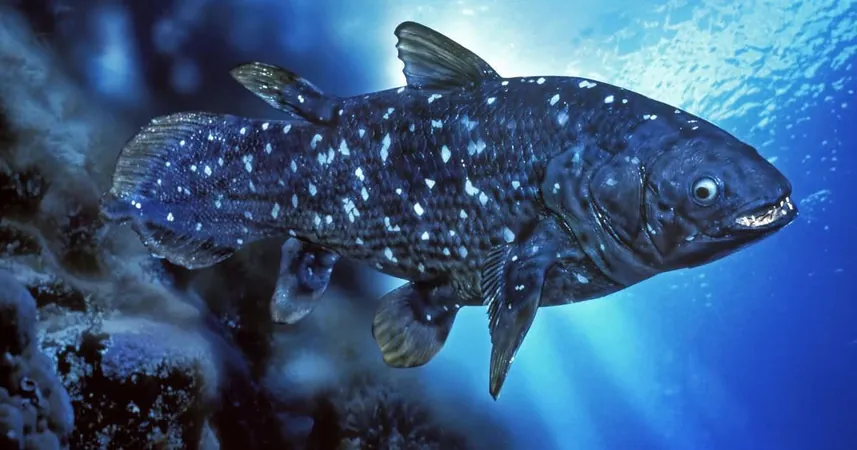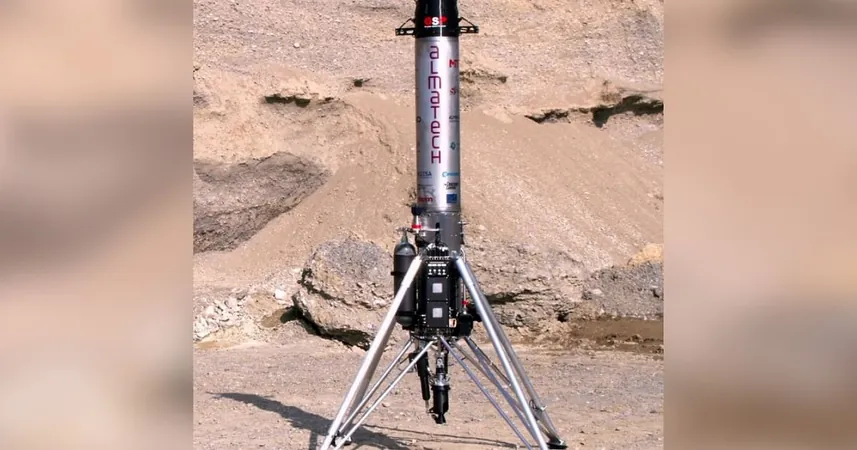
Unveiling the Ancient Enigma: 380 Million-Year-Old Coelacanth Fossils Discovered in Australia, Experts Call It a 'Living Fossil'
2024-11-10
Author: Emma
Uncovering a Marine Marvel
In a remarkable discovery that links today's marine life to the age of dinosaurs, scientists have unearthed fossils of coelacanth fish dating back an astonishing 380 million years in Australia, reigniting interest in these ancient 'living fossils.' These fish are part of a group that includes lungfish and tetrapods and holds crucial clues to the evolution of vertebrates.
A Breakthrough in Understanding Evolution
Published in the prestigious journal Nature Communications, the new research underscores the coelacanth as a key player in the evolutionary timeline. It was believed that these fish became extinct long ago, with the last of their kind vanishing about 66 million years ago alongside the dinosaurs. However, a groundbreaking moment occurred in 1938 when a fisherman pulled a coelacanth from the depths of the ocean off the South African coast, revealing that these ancient creatures were still alive.
Plate Tectonics and Evolution
Alice Clement, an evolutionary biologist at Flinders University, stated, “It’s fascinating that plate tectonics considerably influenced the evolution rates of coelacanths over their extensive 400-million-year history.” This discovery highlights the interplay between geological events and biological evolution, providing deeper insights into how species adapt over time.
Discovering New Species
Recent studies have focused on two known species: Latimeria chalumnae and Latimeria menadoensis. However, the scientific team has also identified a new species, Ngamugawi wirngarri, found in the Kimberly region of northwestern Australia. The fossils, which were preserved in advanced 3D scans, indicated that coelacanths have undergone continuous evolution throughout their existence, contrasting the common belief that they simply remained unchanged.
Evolutionary Transformations
Interestingly, the 1938 catch was a modest 7.8 inches (20 centimeters) long, whereas modern coelacanths can grow up to 6.5 feet (2 meters). The fossil specimens revealed that while the coelacanth's body shape has remained relatively consistent, their skull and jawbones exhibit a notable evolution, leading Richard Cloutier, a co-author of the study, to remark, “If we only had the skull to analyze, we would have never classified it as a 'living fossil.' Its transformation is striking.
A Slowdown in Change
Despite significant evolutionary lineage, researchers noted that the rate of change in coelacanths seems to have considerably slowed since the end of the Cretaceous period. They pointed out that certain anatomical developments, such as jaws and hearts, can be traced back as far as 540 to 350 million years ago during the Early Palaeozoic era.
Implications of the Findings
The implications of these findings extend beyond mere academic interest; they shed light on the resilience of these ancient species and the environment in which they thrived. Coelacanths serve as a testament to Earth’s profound evolutionary history, illustrating how life on our planet has navigated through cataclysmic events and adapted through eons. As researchers continue to explore these ancient remnants, the mysteries surrounding the evolutionary journey of fishes—and indeed all vertebrate life—continue to unfold.









 Brasil (PT)
Brasil (PT)
 Canada (EN)
Canada (EN)
 Chile (ES)
Chile (ES)
 España (ES)
España (ES)
 France (FR)
France (FR)
 Hong Kong (EN)
Hong Kong (EN)
 Italia (IT)
Italia (IT)
 日本 (JA)
日本 (JA)
 Magyarország (HU)
Magyarország (HU)
 Norge (NO)
Norge (NO)
 Polska (PL)
Polska (PL)
 Schweiz (DE)
Schweiz (DE)
 Singapore (EN)
Singapore (EN)
 Sverige (SV)
Sverige (SV)
 Suomi (FI)
Suomi (FI)
 Türkiye (TR)
Türkiye (TR)